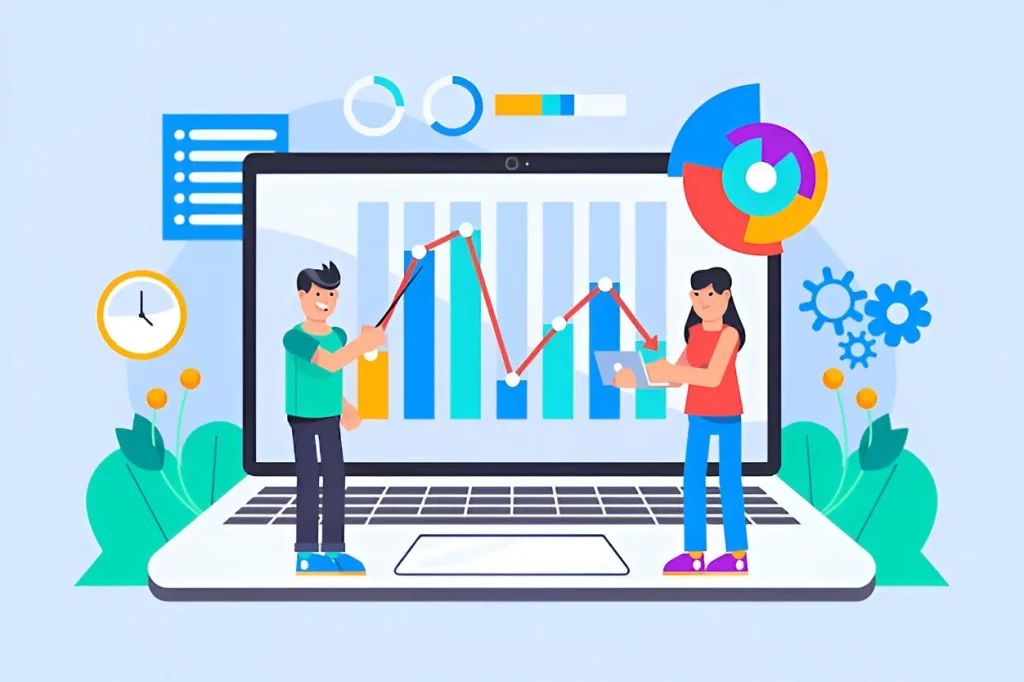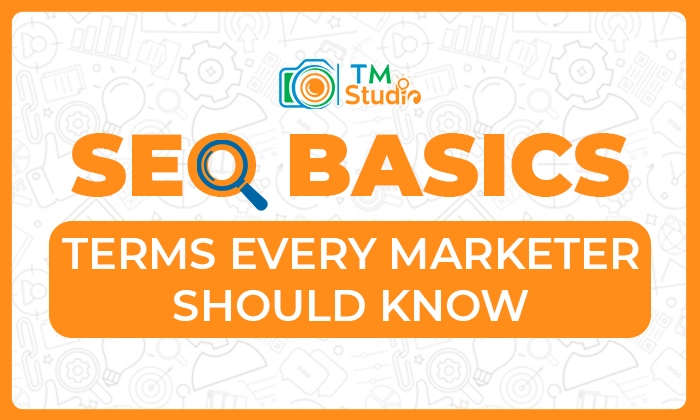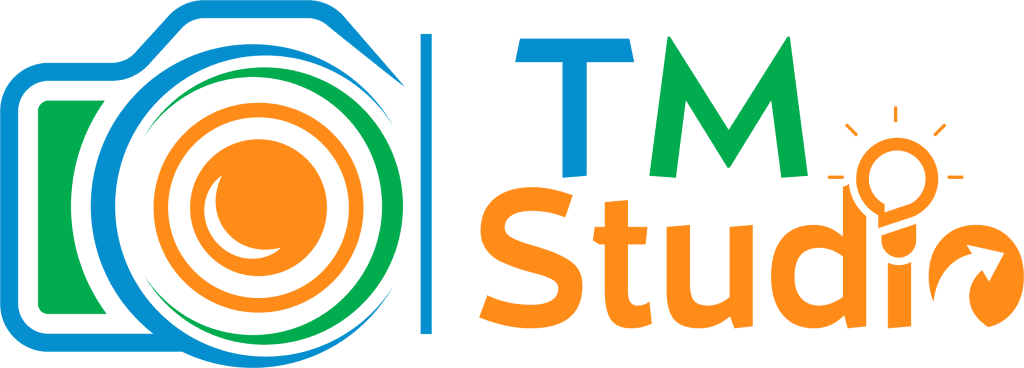Knowing the basics of SEO is a must for any marketer who wants to succeed online these days. Search Engine Optimization is the backbone of online visibility, guiding people straight to the brands they want to find. When marketers grasp key SEO words, they build smarter plans that actually move the needle. Because most web journeys kick off with a search box, that knowledge isn’t just helpful, it’s essential.
Whether you’re promoting a local store, working for a software company, or registering .np domains, SEO know-how ensures better choices. Skip it, and you risk losing valuable organic visitors.
1. SEO Basics Explained: What Is Search Engine Optimization?

Search engine optimization, or SEO for short, is all about making your website show up higher on Google and other search engines. At the most basic level, it means tweaking things so search bots can read your pages more easily and decide they deserve a good ranking.
Getting these SEO fundamentals right really matters for you knowledge. When you make those changes, you’ll usually see more free visitors coming in, people who never even knew your brand was there. Brands that keep those basics in play end up with better leads and more sales than rivals who skip it, and plenty of shops-from neighborhood coding classes to big retailers-have grown fast after adding solid SEO work.
Today, businesses that stick with SEO build a kind of advantage that lasts. Whether you’re running a web-hosting site or teaching a weekend workshop, good SEO service keeps bringing traffic long after you stop paying for ads, since its results keep piling up instead of vanishing the minute the budget does.
How Search Engines Work: The Foundation of SEO Basics
Search engines work by sending automated bots that crawl the web, index pages, and rank them according to relevance and quality. Because of this layered workflow, every marketer who aims to improve visibility online needs a firm grasp of the SEO fundamentals the system relies on.
During the crawling phase, those bots leap from link to link, gathering data and building a huge catalogue that serves as the search engines digital library.
Once indexing is complete, a ranking algorithm steps in, weighing hundreds of signals to decide which page solves a query best. Given that the biggest engines handle billions of searches each day, companies that master these basic principles suddenly find themselves with an almost limitless stream of potential customers.
While secrets will always exist behind the curtain, evaluators consistently look at relevance, domain authority, user experience and technical speed when they review a page. Content that meets accepted SEO standards therefore stands a far better chance of appearing high on the results lists where most clicks occur.
2. Core SEO Terms Every Marketer Should Know

No digital-marketing plan really flies without a solid grasp of SEO. The lingo that sits at its heart forms the backbone of everything you do online. Whether you write a blog post, check analytics, or hunt for quality links, knowing these terms helps you act with confidence rather than guesswork. Here are the key ideas every marketer should own.
a. Keywords in SEO Basics: What They Are and How to Research Them
Keywords are one of the most important elements in the creation of SEO basics strategies that are made up of words and phrases. People use these words to search engines when they want to get information, products, or services.
Marketers who want to reach their target audience efficiently have to recognize the importance of keyword research. For example, if a person enters “domain registration in Nepal” in a search box, he has a definite need that is different from general SEO inquiries.
The keyword research which is effective includes discovering words that not only have a certain search volume but also a low level of competition and are related to the business. A nice set of keywords can produce the right kind of traffic from the users who really need your product.
If it is so, the customers have the intention to make the search in the niche of np domain registration or they search for an SEO expert in Nepal, the knowledge of their behavior will be the base of targeted content strategies.
Firstly, when you do keyword research, try to find out which users’ intents are hidden behind different search queries. Some keywords may be typical of informational searches, while others might carry a commercial purpose. The businesses in the local sphere are often the direct beneficiaries of targeting location-specific terms that are related to their immediate market.
b. On-Page SEO: Optimizing Content and Site Structure
On-page SEO refers to all of the parts on your website which have an impact on the search engine rankings of your site. The components of SEO basics are content quality, title tags, meta descriptions, header structure, URL optimization, and internal linking strategies. Learning the on-page optimization gives you direct control over how search engines understand and rank your pages.
Content is undoubtedly the most important on-page factor, and it calls for a clever insertion of keywords without readability or user experience being affected. Therefore, for on-page SEO example, if you are a business offering services of web hosting in Nepal or BIT courses, most effective would be to create informative content that not only addresses customer questions but also incorporates relevant keywords in a natural way.
Title tags need to include main keywords naturally while at the same time they should be attractive enough to make users decide to click through from the search result ranking.
Header tags (H1, H2, H3) provide a simple text hierarchy that both the users and the search engines understand. The URL also has a big role in on-page SEO optimization basics. Descriptive URLs are those that have relevant keywords in them and they perform better than ones that are non-descriptive.
The internal links are good for distributing the page authority across your entire site, as well as helping users find related content that answers their questions.
c. Off-Page SEO: Building Authority Through Backlinks
Off-page SEO is the part of search engine optimization that is related to the activities done outside of your website, which are, however, very effective to improve your website’s position in the search engine results.
Backlinks represent the main off-page factor, especially when those links are coming from authoritative websites of your industry. Such external signals are the decision of the search engines that the other sites have your content
To build effective backlink profiles you have to produce linkable content and also reach out to other website owners, journalists, and industry influencers. When a reputable website links to your content, it confirms your site’s authority and credibility among search engine algorithms, and thereby it goes a long way in boosting your site’s search.
Social media interaction, online reviews, and brand mentions also help off-page SEO. Such factors are not necessarily direct ranking factors but can influence users’ behavior and consequently, the acquisition of more backlinks and organic visitors in the future.
d. Technical SEO Basics: Making Your Site Crawlable and Fast
Technical SEO is concerned with making your website infrastructure more search-engine friendly so that they can crawl, index, and understand your content more efficiently. Some of the crucial SEO basics include site speed optimization, mobile friendliness, XML sitemaps, and the correct implementation of URL structure.
Technical optimization is the backbone of any decision, be it running an email service like Mail Nepal and handling multiple np domains; it makes sure that the search engines can get to and evaluate your content correctly.
The time it takes for a page to load affects user experience and search rankings significantly. Visitors become annoyed with slow-loading websites and may decide not to return; search engines that have user satisfaction as a top priority may give those websites lower rankings. Many tools can pinpoint the technical problems preventing your site from performing at its best.
The importance of mobile friendliness has grown significantly since the number of searches made on smartphones and tablets has increased. Search engines are now placing more importance on mobile versions when they are checking and rating content over all devices. When local businesses are targeting mobile users in their particular geographic regions, this point becomes even more significant.
3. Important Metrics and How to Use Them

Familiarizing oneself with key metrics is pivotal to optimizing SEO performance, and one’s Domain Authority and Page Authority are two critical metrics that require deep focus.
a. Domain Authority and Page Authority
Domain Authority and Page Authority are very well-known scores that show the chances that websites and individual pages have of being among the top in search results. Both of these scores range from 1 to 100, where high scores indicate that the site or the page has a high chance of ranking well in the search engine results.
The marketers’ understanding of these metrics is a great way to measure their SEO basics progress and plan out the improvement areas.
Domain Authority takes into account your website’s linking profile, content quality, and overall trustworthiness when determining its score. Typically, good-established websites have high domain authority scores since they have obtained many high-quality backlinks in the majority of the periods.
If you decide to register an np domain for your business, then building domain authority will be the result of the consistently SEO basics training to the whole site.
Page Authority is a specific metric that measures strength of an individual page, thereby enabling you to comprehend which content is more effective and for what reason. The higher the number of a page’s authority, the more likely it is to rank for competitive keyword difficulty, thus this metric becomes very important for content planning and optimization priorities.
Typically, local businesses providing specialized services benefit most from concentrating on page-level optimization as it allows them to get results quicker, rather than trying to increase domain authority all at once.
b. Organic Traffic and Click-Through Rate (CTR)
Organic traffic denotes the visitors who come to your site via free results from a search engine traffic. This metric is a direct indicator of how great your SEO basics strategies are in bringing in the right target audience. Besides, the rise in organic traffic goes along with a higher volume of leads and sales that do not require continuous advertising spending.
The click-through rate indicates the proportion of searchers who are exposed to your listing and then actually visit your site. The higher CTRs suggest that your titles and meta descriptions communicate the upshots of the visitors clearly.
These two metrics cannot be considered separately if one wants to understand the results of SEO. Without clicks, even high search ranking positions mean nothing, and the number of clicks without conversions could indicate the quota of content quality/user experience that has to be fixed.
c. Bounce Rate and Time on Site
Bounce rate shows the part of visitors who exit from your site after having seen only one page. A high bounce rate can be a sign that either your content is not what the users expected or your website has some technical issues that negatively affect the user’s experience. Analyzing bounce rate is a means of discovering pages which are weak parts of the site and can be improved.
Time spent on the website is a measure of the period during which visitors are occupied with your content. The greater a session’s duration, the better content quality and user satisfaction it indicates. Search engines utilize engagement signals like time on site to assess content quality and user experience.
In fact, these two metrics are interrelated and both contribute to better content effectiveness and user satisfaction. Visitors stay on pages with low bounce rates and high time on site because they find those pages valuable, thus search engines prefer them as they want to provide their users with helpful results.
4. How to Apply SEO Basics to Your Website Strategy

So you get the SEO basics, right? Cool. Actually using them on your site is where you see things take off. If you plan your SEO right, more people will see your site, which means natural growth and helps you hit your online goals. Here’s what to zero in on to really put those SEO basics to use for the long period.
a. Build Your Strategy with Focused Keyword Research
At the heart of good SEO sits solid keyword research. Stick to the basics, and you’ll want to figure out the words and phrases your audience types into search boxes, then shape your content creation around those terms.
Grab a keyword tool and let it point out ideas, while also checking how hard each phrase might be to rank for so you can pick the ones worth chasing first. Get this choice right, and everything you do on the page or out in the web world stands on a sturdy base
b. Structure Content with On-Page Optimization
On-page optimization sits at the heart of solid SEO practice. It covers small yet powerful tasks: giving each page a descriptive title, writing a tempting meta summary, setting headers in a clear order, and weaving keywords into the text where they read naturally. Tuning alt text for images, adding useful internal links, and crafting clean URLs boost a pages visibility even more.
c. Use Content Creation to Support Visibility
Good content marketing still carries the biggest weight in SEO. Fresh, useful posts keep your site active in the eyes of search engines and give visitors a reason to return. Following a simple plan that picks on-topic subjects slowly builds authority and sparks more clicks and shares. Every article or guide should match what users actually want and follow those basic SEO rules.
d. Optimize for Local Visibility
If your business serves a particular area, local SEO stops being optional and becomes essential. Start with location-focused keywords, polish your Google Business Profile, and double-check that your phone number, address, and hours are correct everywhere online. When these basics are in place, people in your neighborhood can find you more easily, and that often leads to higher foot traffic and inquiries.
e. Measure Performance and Adjust Accordingly
Learning SEO basics is just the first step putting them into practice on your site is where the magic begins. Having a robust SEO strategy increases visibility, drives organic growth, and keeps your overall digital goals in line. Here are key areas of focus to guide you to apply SEO basics in an effective and sustainable way.
5. How to Use Google Analytics to Track SEO Performance.

The concepts of SEO are only a fraction of your online development. In order to be sure that your hard work is being rewarded, you should have correct data and Google Analytics can help you get exactly what you need. It will enable you to monitor your performance in SEO, adjust what works best, and determine areas that require some improvements.
Regardless of whether you pay more attention to the ranking, the engagement of the content, and technical optimization, Google Analytics 4 will give insights to perfect your SEO approach.
a. Monitor Organic Traffic and User Behavior
Breaking down the source of traffic is among the main functions of Google Analytics. In case you target the segment called “Organic Search”, you will be able to gauge the amount of traffic getting in through the search results. It will provide you with a real-time picture of the effectiveness of your optimization measures, such as title tags, meta-description, and keyword targeting.
Moreover, behavior indicators such as the average session length, the bounce rate of sessions, and the pages per session will assist you in knowing how customers engage with your content. In the case of fast-leaving users, then this might show that your contents are not relevant to search intent.
b. Measure Content Performance with regard to Search Intent
Applying the basics of SEO implies that your content will be aligned to user search intent. Google analytics invisibly indicates which pages are visited most, and the duration of them. This will allow you to determine which content creation is meeting the expectations of the users and which ones may require some improvements or optimization through search intent.
Use this information when combined by tools that scan at keyword difficulty and find places to focus on easier-to-rank phrases without losing relevance.
c. Follow Conversions and SEO Objectives
The changes of conversions draw attention to the business impact of SEO. You might be tracking newsletter sign-ups, purchases of your products, or contact form filling, or whatever important data you would get, and you need a way of linking your SEO initiatives to actual results, and Google Analytics helps to do so. Establish objectives understand what percentage of your traffic through search results make up real conversions.
d. Polish Technical SEO Using Behavior Flow
To the extent of contents, there are the technical aspects of SEO basics. Install Google Analytics to track the site flow, as well as identify problems such as excessive exits on specific landing pages. Combined with the tools which crawl your XML sitemap or check the state of link building health, you can create a more all-encompassing technical improvement plan.
e. Use Data to Back Up Continuous SEO Strategic Plan
A good SEO strategy is based on data. By having the information provided by Google Analytics, you get to know what matters most to be improved first whether it is repasting the poor meta description, optimization of the title tags, or better internal connection as well. Choosing to review performance regularly, you guarantee that your SEO fundamentals will be up to par with the changes in the search engines as well as with the needs of the audience.
5. Why will mobile-friendliness be important in basic SEO?
In the current world of digitalization, mobile-friendliness is the most important factor in the basics of SEO. Since most people connect to the online world through smartphones and access websites via the latter, there is no longer an option to optimise your site on mobile devices, as this is the primary discrepancy between attaining high search engine ranking on Google and delivering an un-stuttering user experience.
a. Mobile-First Indexing and SEO implication
The mobile-first indexing of Google implies the mobile version is the one that the search engine will take into consideration when ranking your pages. This shift makes the significance of a mobile compatible site to your current SEO strategy. Having a mobile site that is slow, cumbersome, bumper-to-bumper and hard to understand can cost your ability to rank well, in spite of having a perfect desktop copy.
Mobile-first indexing centers mobile usability as the major factor to alter not only how your pages are listed in the search, but also the way people can use your content on the move. The failure to optimize mobile may result in loss of organic traffic caused by mobile search.
b. Core Web Vitals, User Experience, Cumulative Layout Shift (Cumulative layout shift or CLS)
The mobile device performance is strongly connected with the user experience. Core Web Vitals are sets of metrics developed by Google to measure loading speed, interactivity and visual stability with metrics such as Largest Contentful Paint (LCP) and Cumulative Layout Shift (CLS). To cite an example, a large CLS means that you have unexpected layout changes when the page loads, and that annoys the users, damaging your SEO.
Having a quick LCP and reducing CLS must be part of your technical SEO audits. These metrics can be tracked with the help of such tools as Google Page Speed Insights or Search Console that can pointed out the improvements increasing both the usability of the content on mobile and search rankings.
c. Responsiveness and Mobile design
The mobile SEO basics include responsive design. A responsive approach means that your site will adapt itself to any screen size or device since it adjusts layouts and images automatically. Not only this eases the task of maintaining the site since it does not create distinct desktop and mobile versions, but it is also much more enjoyable to use which may help your link building endeavours since more people will visit the site and want to share your content that way as well.
d. Mobile Accessibility and Location Pages
Location pages that are friendly, well-optimized and target specific areas are important to business that is targeting the local audience. Such pages must be fast, easy to read and navigate in mobile devices. Since local searches remain one of the most popular types of search on smartphones, mobile optimization should not be ignored an opportunity to win in local search.
e. Incorporating Mobile Friendliness in your SEO Plan
The mobile-friendliness is a definite part of a good SEO strategy. It fits with search intent as it focuses on how people search using their phone so that your content, titles tags, meta descriptions, and site design work in concert with each other regardless of device. When utilized along with proper link building and technical SEO, mobile optimization will take a place so that your site does well in competitive search results.
6. Top SEO tools to Help you in Your Optimization Plan

It is much easier to learn SEO core skills once you have a proper tool. The tools will assist you not only to organize your workflow but also to get all the data to enhance the visibility, correct all the technical problems, and increase your ranking on search engines. If you are only beginning or trying to optimize your current strategy, the following are the tools you must know to assist you in optimizing.
a. Keyword Research Tools
The fundamentals of SEO deal with knowing what your audience is keying in. The Ubersuggest and Keyword Magic Tool are tools that assist you in identifying high-potential keywords, finding keyword gap checking the level of difficulty of the keywords, and determining the possible long-tailed searches. Keyword trends and related terms that you may add to your contents marketing technique are also portrayed in these tools.
b. Performance and Technical SEO Tools
The aspect of health in SEO is technical health. Google Search Console and Screaming Frog are tools through which you can find the crawling errors, bad links, and indexation issues. You can also fix the problems related to page speed with the help of Google Page speed issues or GTmetrix. A quick and faultless site enhances user experience as well as rankings in the search engines.
c. Tools of Content Optimization
To have a good content marketing, the content must be relevant and must be optimized. Such tools as Yoast SEO, Rank Math, or Surfer SEO address where to use keywords, how readable and well-structured they are. These tools can assist you in the addition of structured data and schema markup and can ensure that your content is easier to comprehend by search engines and the way it looks in Google SERP.
d. Analytics and Tracking Services
Using SEO basics, one should measure his or her progress. Google analytics allows people to view precise analytical information about user behavior and traffic sources, as well as about conversions. Complimented by Google Search Console, you have an overview of what is working in your strategy, what needs to be enhanced.
e. The Local SEO Tools
Local SEO packages such as Moz Local or Bright Local allow management of business listing, reviews and citations by businesses focusing on a location. Such tools make sure that your information will be the same on all platforms and that you will be more visible in local searches.
7. SEO Basics Mistakes: Common SEO Errors to Avoid as a Beginner

Stuffing keywords into text is a common mistake by newcomers which generally damages their standing instead of lifting it. Ensure that you grasp the basics and avoid the mistakes of overusing keywords, as it impacts both text engagement and positions adversely.
a. Keyword Stuffing Damages SEO Efforts
Keyword stuffing means cramming the same words over and over into a page so it pops up higher in Google search results. People who read that junk feel cheated, and search engines catch on, slapping big penalties on sites that play that game. These days, good SEO guides you to weave keywords in smoothly, so they help the writing, not wreck it.
Rather than hammering the same phrase, build full posts that include related words and near-synonyms. Modern crawlers read for meaning, not just exact matches, so covering a subject well matters way more than repeating a line twenty times. Keep balance the entire time.
The real trick is balancing solid optimization with readability. Place your main keywords where they count- in the title, in headers, and a few times in the text- but always put the needs of your readers first by giving them useful, interesting information.
b. Ignoring Mobile SEO Limits Visibility
Mobile searches now account for over half of all online queries, so neglecting mobile-friendly website design is one of the biggest SEO slip-ups you can make. Sites that fail to deliver a smooth mobile experience drop in rankings and lose chances to connect with people using phones or tablets. This issue is especially urgent for organizations advertising IT courses in Nepal or any place-based service, because many local prospects will first look for options on their mobiles.
Being “mobile-optimized” means more than shrinking images to fit a smaller screen; the page must load quickly, menus must be clear, text must remain legible without pinching, and every button or link should be big enough to tap with a thumb. Search engines now treat the mobile version as the primary one when they sort pages, affecting scores across all devices.
The best way to spot trouble is to browse your site on several popular phones and tablets yourself. In addition, free and paid tools can run scans, flag issues, and offer step-by-step fixes, so your site stays strong no matter how visitors are connected.
c. Low-Quality Content Weakens SEO Performance
A lot of newbies get so wrapped up in technical SEO stuff that they forget the real heart of ranking: good content. No amount of page speed tweaks or meta tag fixes can save thin, badly written, or totally random text; it simply will not show up in search.
Great content, on the other hand, fully meets reader needs, offers fresh insights, and clearly shows that the author knows what they are talking about. Because of that, search engine traffic reward pieces that keep people scrolling and happy with the results they clicked.
Rather than writing just to please an algorithm, spend your energy helping actual readers and answering their questions in detail. When you do that, the basic SEO tricks fall into place on their own, and you slowly earn the trust and authority that pay off over time.
Conclusion: Master These Terms for Better Results
Mastering the key terms of Search engine optimization lays the groundwork for marketing campaigns that deliver steady, long-lasting growth. When marketers speak the same language, they can craft smarter optimization plans, create better content, and spend resources where they count most. Whether you’re promoting a software product, guiding non-profit registrations, or advising clients on search strategy, these basics still decide how far you succeed.
The online world is always changing, so keeping up with the basic rules of SEO is more important than ever. By watching your numbers, trying fresh ideas, and adjusting whenever algorithms shift, you can ensure your plan stays sharp and stands out in a crowded digital space.
Great SEO does not happen overnight; it comes from sticking to the fundamentals day after day, not from gimmicks or one-time hacks. A clear strategy built on this steadiness delivers steady visitors and growing revenue, giving your business the lasting edge it needs to lead its market for years.For expert help in growing your online presence, check out TM Studdio for reliable SEO solutions.
FAQs
1. What are the basics of SEO?
Search Engine Optimization (SEO) is a way of optimizing your site in such a way that search engines such as Google can better decode your content. This assists the users in locating your web site on querying relevant keywords. The rudimentary SEO encompasses:
a. Producing quality and pertinent material.
b. Title, meta description and URL refinement.
c. Crafty use of keywords.
d. Making sure that your site is smooth, accessible and user-friendly.
e. Acquiring backlinks of reputable sites.
2. What are the 4 pillars of SEO?
These are the 4 pillars of SEO:
a. On-Page SEO OnPage SEO is the optimization of single web pages (titles, headings, text, imagery, links, etc.).
b. Off-Page SEO: Acquiring authority by backlinks, social interactions and brand mentions.
c. Technical SEO- enhance the crawlability, speed, mobile-friendliness of the sites, indexing, structured data and architecture.
d. Content Development: Developing important, captivating and easy to use material that is aligned to the purpose of search.
3. What are 4 steps of SEO?
There are 4 primary SEO steps:
a. Keyword Research- Using and searching the correct keywords that your visitors are using to search.
b. Readability Check: It is to make sure that your content is clean and well-organized and easy to read.
c. Connecting Linking- Navigating with internal links and using external links to create authority.
d. Marketing: Advertising your work on social networking, email, promotion, and outreach, etc. to gain traffic and back links.
4. How to Check Your SEO Ranking for a Specific Keyword?
To check your keyword ranking:
a. To ensure that you are ranked high in your keyword.
b. Employ an SEO ranking tool such as the Ahrefs, SEMrush, Google Search Console, or Ubersuggest.
c. Add the particular keyword and domain of your website into the tool.
d. Click on the button with the label Check Rank.
e. The tool will indicate the ranking of your site of the same keyword on the search engines.
5. What is the basic SEO analysis?
Simple SEO-analysis is the analysis of your web-site aimed to analyze its optimization. The main categories involve:
a. Targeting and use of keywords.
b. Speed of page loading and mobile optimization.
c. Meta description, and title tags.
d. Linking and URL structure.
e. The profile of the backlink and domain authority.
f. Technical problems such as crawl errors, or broken links.
This is aimed at having strengths, weaknesses, and areas of opportunities in terms of increased visibility in search engines.

Rajeev Neupane is a results-driven SEO & Research Analyst at Think Move Solutions, a global IT service company based in Kathmandu, Nepal. With a strong background in On-page, technical SEO, and competitor analysis, Rajeev helps brands grow their organic visibility and drive measurable digital growth.




